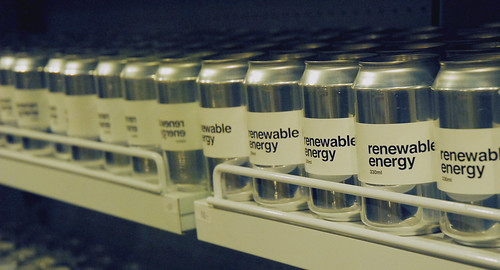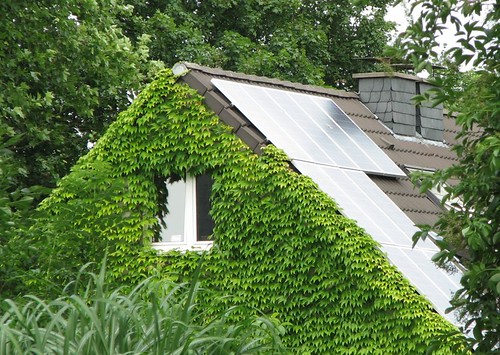Said in the voice of Kent Brockman:
I for one welcome our new American overlord
This has to be one of the most hopeful pronouncements to come out of the US for decades.
Green from the roots up, Sustainable from the top down

by Tom Raftery
Said in the voice of Kent Brockman:
I for one welcome our new American overlord
This has to be one of the most hopeful pronouncements to come out of the US for decades.

by Tom Raftery
Google.org is the not-for-profit arm of Internet search company Google.
After hearing about some of their initiatives, I was curious to learn more about Google.org. I contacted my friend Vint Cerf, Google Vice President and Chief Internet Evangelist and asked him if he’d come on the show to talk about Google.org and Google’s sustainability projects.
Vint very graciously agreed to and so we have this video. Thanks Vint.

by Tom Raftery
Up next:
Wind and Solar Come of Age: Making Renewables Full Partners in Our Energy Future – Wednesday, November 5 @ 1 PM Eastern / 10 AM Pacific, Featuring Scott Sklar of The Stella Group and Tom Raftery of GreenMonk (that’s me!).
Scale, advances in technology, and the rising cost of fossil fuels mean wind turbines and solar panels are no longer novelties. But getting the most out of solar and wind involves more than new installations. In this Webinar, we’ll examine the challenges and opportunities associated with integrating peak-load, distributed power sources in our base-load-expectant society with an electrical infrastructure built for centralized generation. More info here.
And, don’t forget the final Webinar in the Series:
Decarbonization and Nuclear Power? – Thursday, November 13th @ 11 a.m. Eastern/8 a.m. Pacific, Featuring Duke Energy CEO Jim Rogers, Dan Yurman of Fuel Cycle Week and Ashton Poole of Morgan Stanley’s Global Power and Utility Group
This controversial energy source appears to promise massive benefits, but also presents some serious obstacles. Our panelists will explore the possibility of a nuclear future in America, discussing the costs of adding new nuclear plants, the potential impact of carbon pricing, and whether NIMBY politics and regulatory barriers can be overcome. More info here

by Tom Raftery
I spoke today at the O’Reilly Web 2.0 Expo in Berlin and the title of my talk was:
Electricity 2.0 – Using The Lessons Of the Web To Improve Our Energy Networks
The talk was about demand response, smart grids, renewables etc. and it received extremely positive feedback so I thought I’d share the slide deck here for anyone who may be interested.

by Tom Raftery

A couple of interesting announcements were made in Ireland in the last week.
On the 8th of Oct., Eirgrid, the Irish grid operator launched their Grid25 strategy (pdf warning). In the strategy document they announced they are spending €4 billion reinforcing the Irish distribution grid in the expectation of a 60% rise in electricity usage.
The Irish Environment Minister, John Gormley in his Carbon Budget announced that the Irish government is going to target that 40% of electricity consumed in Ireland would be from renewable sources by 2020. This is an increase over the previously stated, already ambitious target, of 33% from renewables.
Ireland had an average electrical demand of 3.2GW in 2007. A 60% increase means an average consumption of 5GW by 2025 and an average of 4.5GW in 2020. This is the date the government has set as its target of 40% from renewables.
40% of 4.5GW means that Ireland will average 1.8GW from renewables in 2020. Assuming that this will come from wind (there is no other viable renewable energy source in Ireland), this will require 5.4GW of installed wind capacity.
Ireland currently has 1GW of installed wind capacity so to hit the target it needs 4.4GW of wind farms to be built.
That’s 366MW per annum or just over 1MW every day until 2020! A 1MW wind turbine would be a significant structure costing in excess of €1m.
So the Irish government has set as a target the sourcing of 1MW extra from wind energy every day for the next 12 years?
I also spotted today that StrategyEye in their new quarterly report are reporting that investment in the Cleantech sector is up 50% this quarter, compared to the first quarter of 2008.
The financial markets might be in trouble but renewables are definitely seeing boom times!

by Tom Raftery

Microgeneration, the generation of electricity by home owners, is becoming increasingly common, especially with the cost of energy going up and the cost of wind turbines and photovoltaic panels for the home falling.
The majority of people deploying these solutions are doing so to 1) lower their home energy bills and 2) to help the environment.
What if I told you that often installing microgeneration equipment does not help the environment?
Bear with me while I try to explain. This is complex, counter-intuitive and I am not the world’s best communicator!
Grid operators have problems integrating renewable energy sources onto the grid right now because they are a variable source of supply. Couple that with the variability of demand and your grid starts to become increasingly unstable.
By far the most economic renewable energy source currently is wind but wind energy’s supply curve is often almost completely out of phase with demand (wind blows stronger at night when there is least demand for energy).
The more renewables that are brought onto the grid, the greater an issue this becomes with grid operators having to shut down production from wind farms in times of oversupply! Bear in mind also that there has to be enough generation capacity from non-wind sources (oil, gas, coal, nuclear, etc.) to pick up the slack on days when the wind doesn’t blow.
In times of oversupply from renewables, it would be far preferable to be ramping up consumption of energy using moveable loads, rather than shutting down production from renewables.
Now consider the home-owner who has deployed their own wind turbine. At times when the wind is blowing this home-owner is generating power thereby reducing their demand just when there is an oversupply on the grid! And if they have a net metering agreement with their utility, they further exacerbate the problem by pumping extra electricity into the grid, just when it isn’t required!
Conversely, on calm days, when extra energy is most needed, micro-generation contributes nothing.
There are two main problems:
1. There are no economic energy storage technologies currently available – though this situation is evolving rapidly with the ramping up of investment into battery research by the transportation industry in particular and
2. Real-time pricing data for electricity generation are not exposed to the consumer – if they were, and automated demand response mechanisms were put in place, you would see a radical shift in the energy consumption curve (people would consume energy when it was cheaper – i.e. when it is abundant).
If these two nuts were cracked i.e. economic energy storage mechanisms were available and real-time pricing data were exposed, micro-generators could generate energy when the wind blows, store it and then profitably sell it back to the grid when demand increases, or the wind drops.
For now though, while microgeneration may be beneficial in reducing your energy bills, it is of no benefit to the environment.
Note that I didn’t address CHP in this post because I was trying to keep things simple! CHP can be beneficial, as can any microgeneration, if the production of energy increases in line with the price of electricity.
As the price of electricity goes up, so too does its carbon footprint. If you consume electricity when it is cheap, you are facilitating the greater penetration of renewables onto the grid. If, as a micro-generator, you can produce clean power when electricity is expensive, then you are helping the environment.
UPDATE: Just to clarify, I fundamentally believe microgeneration is a good thing. However, given the current antiquated state of the grid in many countries, the disconnect between generation and demand profiles for wind particularly, and the lack of decent energy storage technologies, the environmental benefits of microgeneration are far from straightforward. This will change as energy storage options improve and demand response mechanisms and smart grids are deployed.